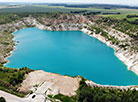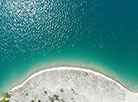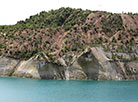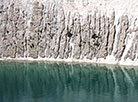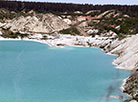BELARUS INCOGNITA: Flooded chalk pits, mountain-like slug piles, stony “canyons” – man-made beauty you have to see
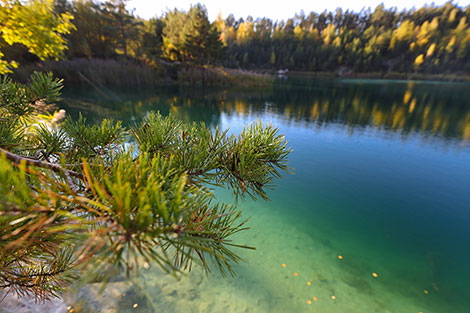
Belarus is famed far and wide for its natural beauty – national parks, wildlife sanctuaries, and landscape reserves where truly unique natural territories have been preserved. However, the blue-eyed country has something else to surprise travelers with. Not many have seen the country’s artificial points of interest – artificial ponds full of azure, bright turquoise, and even emerald-green water, deep stony “canyons”, and high “mountains” around mining sites, including places where sand, chalk, limestone, and potash salts are mined…
No, not all of them are easy to get to. There are corporate prohibitions due to their danger but even these restrictions cannot stop fans of impressive imagery. Belarus.by offers these most beautiful views to you. You have to agree that they often resemble plots of fiction movies. Thanks to unusual photos in social networks today we can single out the most popular locations…
Krasnoselsk pits (Volkovysk District, Grodno Oblast) are sometimes dubbed as Belarusian Maldives. They stretch for kilometers and can be as deep as 30 meters at times! However, you have to remember that they are part of the territory of the construction materials manufacturing company OAO Krasnoselskstroymaterialy. This is why access to the water ponds is restricted and vehicles are forbidden to stop near them.
Soligorsk terricones (Minsk Oblast) tower in areas previously mined by Belaruskali, one of the world’s leading producers of potash salts and mineral fertilizers.
Bereza chalk pits (outside the town of Bereza, Brest Oblast) are made of four quarries that have been mined since 1930. The “youngest” one is 40 meters deep. The place was mined by the Novo-Bereza limestone plant in the Soviet times (1961-1990).
Lyuban quarry (the village of Khotinovo, Lyuban District, Minsk Oblast) is located in an area where chalk was mined by a construction materials enterprise of OAO Belarusian Cement Plant in 1979-1999. The pond can be 30 meters deep! Fir trees and birch trees have been planted on the banks of the picturesque azure pond to reinforce them against landslides.
Grodno chalk pits can be found on the northwestern outskirt of the city of Grodno (6km away from the center). They are jokingly named as Sinka (the blue one) and Zelenka (the green one) due to the color of the water that filled them up over time. The depth of the quarries is roughly comparable to the height of a ten-story house!
Belarus’ only granite deposit is located in Lelchitsy District, Brest Oblast (the town of Mikashevichi) where development and the establishment of Europe’s largest granite quarry began in the 1970s. Today the quarry stretches for 2,760m from the west to the east and for 1,770m from the north to the south. The quarry is 150m deep, which is 20m below the level of the Baltic Sea. It is truly a sight to behold! Over the years the quarry became something resembling a huge terraced amphitheater: there are loops of roads along its perimeter and haul trucks have to pass over 15 loops in order to reach the bottom. From up high the powerful BelAZ trucks look like toys.
On picture: autumn at the Lyuban chalk pit







